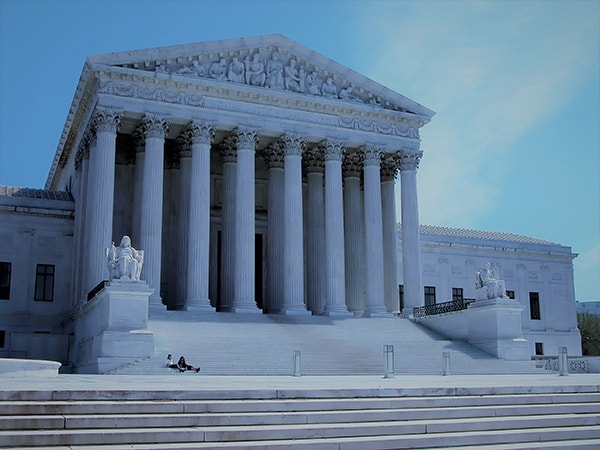Debunking the Refine of Federal Appeals: What You Need to Know
Browsing the intricate world of federal appeals can typically look like traversing uncharted waters for those strange with the procedure. Understanding the subtleties of appellate court territory, the complexities of filing a notice of allure, presenting an engaging brief, and making a persuasive dental debate are vital components that can significantly affect the result of a situation. By untangling the layers of complexity surrounding government appeals, individuals can acquire a clearer understanding right into the mechanisms that control this critical point of the lawful system.
Understanding Federal Appeals Process
Diving right into the intricate world of the federal appeals process introduces a systematic and structured trip through the judicial system - top federal appeal lawyers north carolina. Federal charms work as a crucial device for assessing decisions made by lower courts. Understanding this process is essential for any individual associated with lawful process at the federal level
The procedure typically begins with a party dissatisfied with a reduced court's ruling submitting a notice of allure. This activates a review by a greater court, where a panel of courts evaluates the lawful arguments offered by both parties. Briefs describing the legal thinking behind each party's setting are submitted, and dental arguments might be heard to clear up complex concerns.
The appellate court's decision is based on an extensive assessment of the lower court's process and the disagreements offered. The judges do not reexamine facts yet focus on whether lawful errors took place that impacted the lower court's decision. Once the appellate court reaches a choice, it can verify, turn around, remand, or change the reduced court's ruling, offering quality and finality to the legal disagreement. Recognizing this procedure is crucial for browsing the intricacies of government allures effectively.
Appellate Court Jurisdiction Described

Appellate courts have jurisdiction over certain sorts of cases, commonly those entailing legal errors, step-by-step concerns, or inquiries of legislation instead of valid disagreements. The territory of appellate courts is generally outlined in statutes and regulations that govern the court system. Understanding appellate court territory is crucial for events included in the charms procedure as it identifies whether a situation is eligible for review and the level to which the appellate court can interfere in the reduced court's choice.
Filing a Notice of Appeal
The preliminary action in beginning the government appeals process involves filing a Notice of Allure with the ideal appellate court. best federal appeals attorneys south carolina. This important file officially informs the court and the various other events associated with the situation that the appealing party plans to look for a review of the reduced court's choice. Submitting a Notification of Allure is a stringent procedural demand that sets the appellate process moving
When preparing the Notice of Allure, it is vital to ensure compliance with the details rules and standards of the pertinent appellate court. The record needs to generally consist of information such as the situation name, the reduced court's name, the date of the judgment being appealed, and a succinct statement showing the grounds for the allure.
Timeliness is important when submitting a Notification of Allure. Missing the due date for sending this record can result in the appeal being dismissed, underscoring the value of timely and accurate initiation of the allures process. It is a good idea to look for legal assistance to navigate the complexities of filing a Notice of Charm successfully.
Briefing and Oral Argument
In the appellate procedure, offering written briefs and participating in dental arguments play critical functions in advocating for the appealing celebration's position prior to the appellate court. Briefs are detailed legal files that describe the parties' arguments, legal authorities, and evaluation sustaining their placements. These created entries offer the court with a comprehensive understanding of the facts of the case, the appropriate law, and why the appealing party believes the reduced court's decision must be rescinded.
Adhering to the entry and testimonial of the briefs, dental arguments use the parties a possibility to additional clarify their positions, deal with any questions the appellate courts might have, and highlight bottom lines from their created briefs. Dental disagreements are a chance for the attorneys to encourage the judges via spoken advocacy and responses to questions from the bench.

Receiving the Appellate Court Choice

Verdict
Finally, the federal charms procedure is a complex but essential action in looking for justice. Comprehending the appellate court territory, submitting a notice of appeal, preparing briefs, and presenting oral arguments are all vital elements of this process. Inevitably, obtaining the appellate court choice can give clarity and resolution to lawful conflicts. It is crucial her response to browse the government allures procedure with persistance and interest to information to attain a reasonable outcome.
As we proceed from recognizing the federal appeals procedure to exploring the details of appellate court jurisdiction, a fundamental aspect comes to light relating to the authority and limitations of these greater courts in the legal landscape. Appellate court jurisdiction refers to the extent of instances that a certain appellate court has the power to decide and assess upon. Unlike test courts that listen to instances for the very first time, appellate courts are restricted to examining decisions made by reduced courts. Recognizing appellate court territory is vital for events involved in the allures process as it determines whether a situation is qualified for review and the degree to which the appellate court can intervene in the reduced court's decision.
Whether the appellate court affirms, turns around, or remands the reduced court's decision, understanding the implications of the ruling is important for all events entailed in the appellate process.